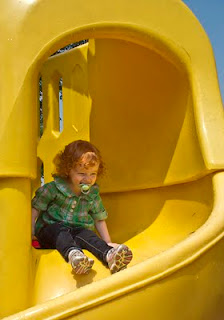I loved the look of my niece's dog taking a break from all the company. The light seemed right: Soft with a hint of direction resulting in nice highlights and there were subtle catchlights in both eyes. What could go wrong.
It is times like this that a DLSR looks good. The better quality lenses on DSLRs would make this picture snap in a way that my simple Fuji FinePix HS10 can't.
On the other hand, I can't afford a DLSR accompanied by a small case stuffed with interchangeable lenses. Also, with my failing health, carrying a bulky and weighty bundle of camera gear with me all the time is out of the question. The HS10 with its super zoom answers my needs.
So, I find myself grabbing my Fuji bridge camera, lying flat on the floor, bracing the camera and my hands against the carpet and squeezing off a couple of shots before the mutt decides he's not a model and stops posing.
When I was shooting pictures for my living, this quality would have been questionable but still acceptable; Hey, I worked for a newspaper. I'm no longer shooting pictures for money but for fun and simple cameras supply fun at a price I can afford.
When buying a camera buying one you can afford is always a good idea. Remember, if you shoot a lot, it is just a matter of time until you drop your photo buddy. I've dropped my HS10 a number of times. I'm getting old and clumsy. If I were to break my HS10, I would shed fewer tears than if I dropped an expensive lens or a pricey DSLR. Replacing my HS10 would hurt, but it wouldn't break me.
No matter what camera you use, always try and capture that that attracted your eye in the first place. If your lens isn't long enough to crop the image in the camera, crop the picture afterwards. The only caveat is to make sure the new, cropped shot is still a large enough file to make a good image when printed or displayed on the Web. (Images for making prints require from 150 dpi up, check with your printer; While images for Web display can get by with 72 dpi. And smaller files load quicker; Another reason for keeping Web files small.)




 Although I have had problems timing action when using my Fuji FinePix HS10, it all came together for this image. The long zoom lens makes framing images such as this very easy. The picture was shot as a RAW file and some minor changes were made in Photoshop before saving the shot as a jpeg.
Although I have had problems timing action when using my Fuji FinePix HS10, it all came together for this image. The long zoom lens makes framing images such as this very easy. The picture was shot as a RAW file and some minor changes were made in Photoshop before saving the shot as a jpeg.